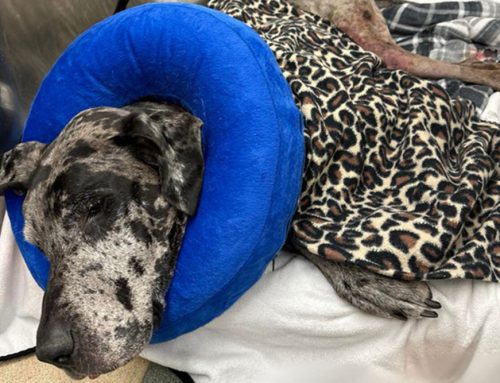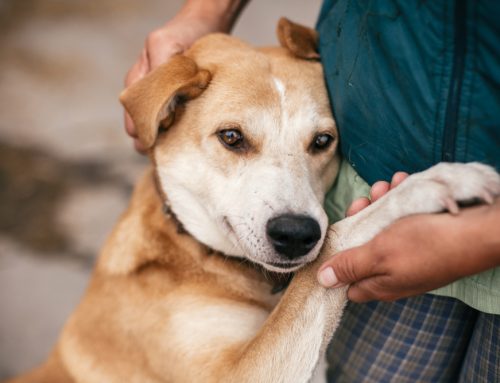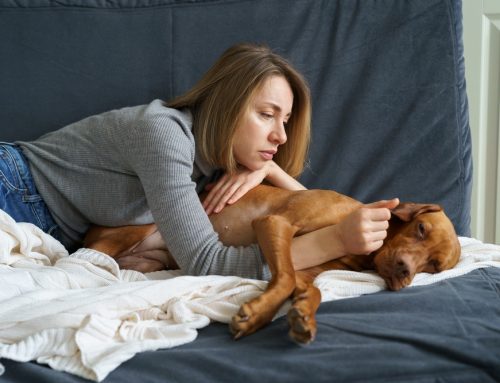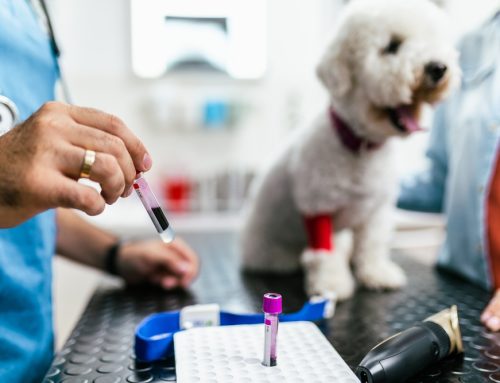Unfortunately, our pets cannot live forever, and knowing how to assess your pet’s quality of life (QOL) is important as they enter their senior years. To learn how to navigate this difficult time, follow our Marcy Veterinary Clinic team’s pet QOL assessment guidelines.
Assessing your pet’s quality of life
You love your pet, and you do not want them to suffer. However, objectively assessing your pet’s QOL can be difficult. To help determine if continuing your pet’s end-of-life care is appropriate, Dr. Alice Villalobos, a veterinary oncologist, created the hurt, hunger, hydration, hygiene, happiness, mobility, more good days than bad (HHHHHMM) scale to help pet care givers assess their beloved companion’s QOL. The scale helps pet owners focus on their pet’s wellbeing rather than on their own personal emotions. To use the scale, pet owners evaluate seven basic factors and assign a score from 0, indicating extremely bad, to 10, indicating normal. A score more than 35 suggests that a pet is well enough to continue end-of-life care, while a score less than 35 indicates that you should talk to your veterinarian about your pet’s best interest. Wellbeing factors to evaluate include:
- Hurt — Consider your ability to control your pet’s pain and their breathing ability. Does your pet experience pain? Does their medication regimen appropriately alleviate their pain? Can you easily administer their pain medication? Does your pet have difficulty breathing? Does your pet require supplemental oxygen?
- Hunger — Your pet must be able to ingest enough food to meet their nutritional requirements. Does your pet finish each meal? Does hand feeding your pet or offering them multiple choices improve their appetite? Is your pet losing weight? Does your pet need a feeding tube?
- Hydration — Your pet must be able to drink enough to stay hydrated. Is your pet dehydrated? Does providing a water fountain or flavored water help improve their water intake? Does your pet need subcutaneous fluids, and are you able to administer these fluids?
- Hygiene — Many sick and aging pets lose the ability to groom themselves properly. Many pets with mobility issues have accidents. Are you able to keep your pet clean and dry to help prevent infections and bedsores?
- Happiness — Happiness is an important part of your pet’s QOL. Does your pet express joy and interest during certain activities, and when they interact with you and your family? Does your pet frequently exhibit stress, anxiety, or fear?
- Mobility — Aging pets may lose interest in going for walks, or they may have mobility issues that prevent them from moving on their own. Can you provide the assistance your pet needs to move to different locations? Would mechanical help, such as a cart, increase your beloved companion’s mobility? If your pet is immobile, can you change their position at least every two hours to help prevent bedsores?
- More good days than bad — When your pet’s bad days outnumber their good days, their QOL may be too compromised to continue end-of-life care.
Tracking your pet’s quality of life
The QOL scale can be used as needed based on your pet’s health. You may initially assess your pet’s QOL once a week, but as their condition declines, you may need to assess their status daily. Follow these tips to track your pet’s QOL:
- Keeping a journal — When you start using the QOL assessment scale, keep a journal detailing your findings so you can track your pet’s progress.
- Individualizing the scale — Your pet is unique, and they enjoy specific activities. Create a list of your pet’s favorite activities, and cross them off the list when your pet’s condition causes them to lose interest.
- Maintaining a calendar — Hang a calendar, and draw a happy face on your pet’s good days and a sad face on their bad days. This will help you visualize your pet’s QOL status.
Assessing your quality of life
Your QOL is also important in the equation of your pet’s needs. Caring for an ailing pet can be difficult and stressful, and if you are not emotionally and mentally healthy, you may not be able to provide proper care for your beloved companion. When assessing your own QOL, consider your responses to these questions:
- Do I have enough time in my schedule to take care of my pet?
- How much will caring for my pet cost, and do I have the financial resources to meet these needs?
- What other responsibilities, such as my family and my job, must I consider when deciding if I can care for my pet?
- Do I have friends or family members who can help me care for my pet so I don’t become overwhelmed?
Saying goodbye to your pet

Once you have decided to humanely euthanize your pet, you may wonder what to do next. Our Marcy Veterinary Clinic team makes the process as compassionate as possible for you and your pet. You can expect the following:
- Pre-euthansia medications — To help ensure your pet is unafraid or experiencing discomfort, we administer a sedative and an anesthetic.
- Procedure — During the humane euthanasia procedure, you are welcome to remain with your beloved companion, but some owners prefer to step out of the room once their pet falls asleep from the anesthesia.
- Reflexes — Your pet may display involuntary reflexes during the procedure, but their actions do not occur because they are in pain.
- Cremation — We work with a compassionate crematory service to provide an appropriate memorial for your pet. You may also have your pet buried at a cemetery or—if government regulations permit—at your home.
Learning to assess your pet’s QOL can help you make difficult decisions as your beloved companion nears the end of their life. If you are concerned about your pet’s QOL, contact our Marcy Veterinary Clinic team to help you determine the best course of action.








Leave A Comment